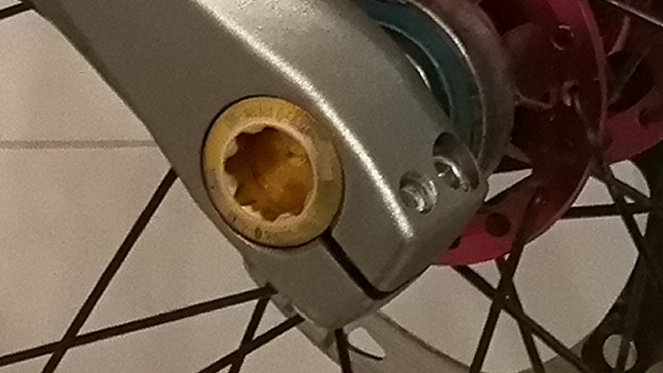It’s been a while since Qu-Ax released their Q-Axle interface and I’ve not really seen all that much discussion about it on here.
Now that’s probably a good sign, but the tech’s also on a far smaller number of unicycles compared to the alternatives so perhaps that means nothing at all.
So, who’s got a Q-Axle based unicycle, and what issues (if any) have you had with it?
What do you like? What do you not like?
Not looking for anything to do with the unicycle that the hub’s attached to, just discussion about the interface itself.
Personally I’ve so far had no issues with the interface, but I do have some thoughts:
-
The lightweight hollow axle so far has been used with a pressed on aluminium shell which has the potential to shift if spacers are not used/one crank is forced on with the end cap before tightening the other (QU-AX Q-Axle 29 Disc white)
It also could possibly rotate if the tolerances are not absolutely fantastic - Nimbus and KH multi-part hubs had this issue in the past, sometimes leading to creaking.
If this did appear to be a problem, is there anything that would stop the hubs being made one piece? -
The tolerances between the crank and the axle have to be absolutely perfect to ensure that the splines are in solid contact on both forward and backward motion. On a bike this isn’t really so much of an issue - if the cranks slip slightly then it’s unlikely they’d ever really move back and forth as the force is mostly all in one direction.
From my personal experience although I’ve not experienced any slipping, the tolerances do not appear to be such that the splines quite contact in both directions (on my 145mm Zero-Q cranks) - it seems like the clamping force is doing some of the work in stopping them moving.
On an ISIS spline as you tighten up the crank (to a correct width spacer), the interface typically deforms very slightly ensuring a perfect fit between the crank and axle. If/as the interface wears, you can generally use a slightly smaller spacer to get more life out of the crank.
Any wear on the Q-Axle interface would seem to lead to potential creaking forever if the clamping force alone is not enough to stop movement. -
The bolts on the end of the crank require either large cranks to get a circle, or have an uneven bump. In reality this appears to not be an issue at all for roll tricks (with the zero-q cranks) from what I’ve seen.
-
The larger axle requires smaller bearings to fit into a 42mm bearing holder which will wear faster, and from personal experience do not appear to be as good quality as the basic ones supplied with other unicycles.
-
The interface forces a single angular crank location so they cannot (unlike with other interfaces) be rotated to even out tyre wear/wheel force location.
Now with ISIS regular removal and re-installation of cranks is a good way to wear the interface, but it is at least possible. Rotating the tyre is somewhat more difficult.



 tidal forces’ effect on weighing …
tidal forces’ effect on weighing …


 – depending on the crank length, riding style, your shoes and your lower extremities’ anatomy.
– depending on the crank length, riding style, your shoes and your lower extremities’ anatomy. And I presume that this is no or less of an issue with the black ZeroQ cranks, as they seem to be better shaped.
And I presume that this is no or less of an issue with the black ZeroQ cranks, as they seem to be better shaped.